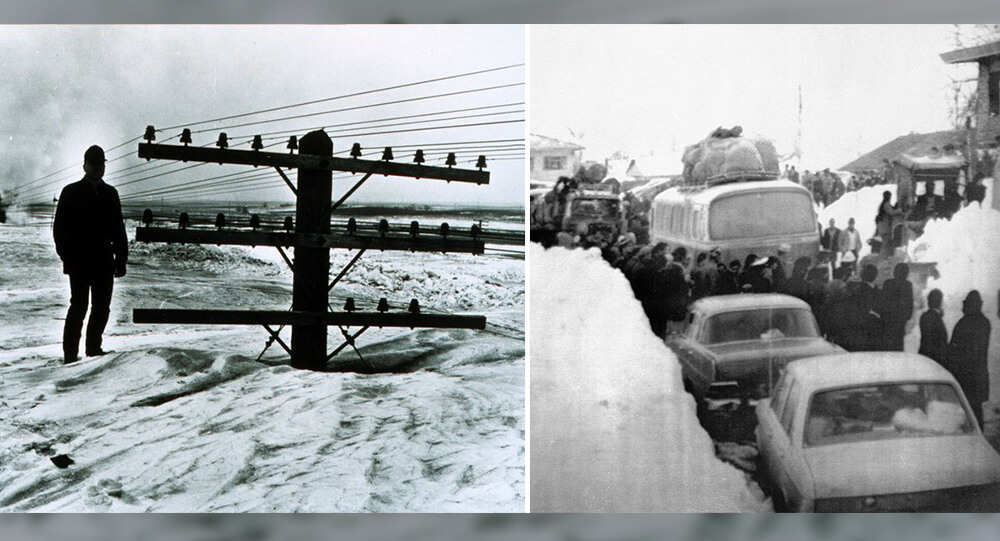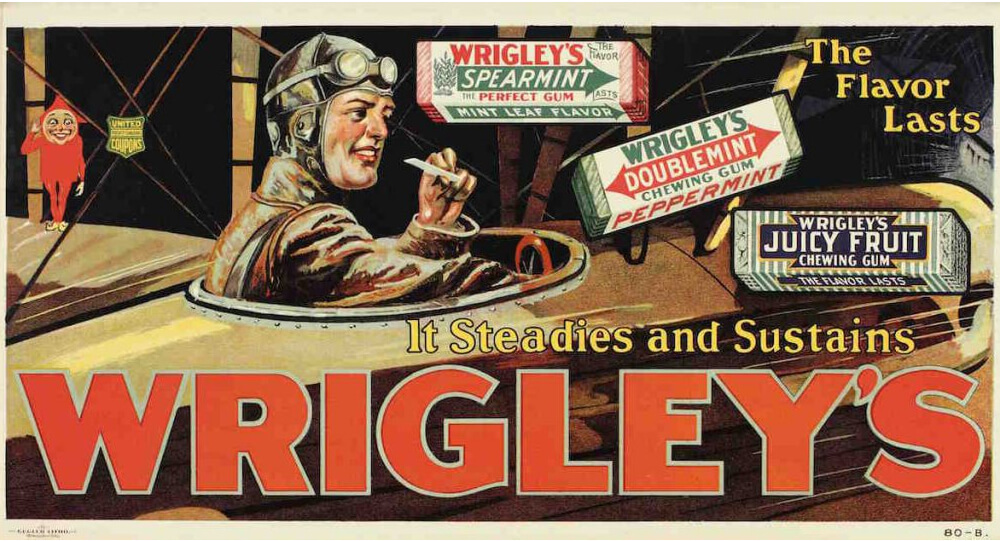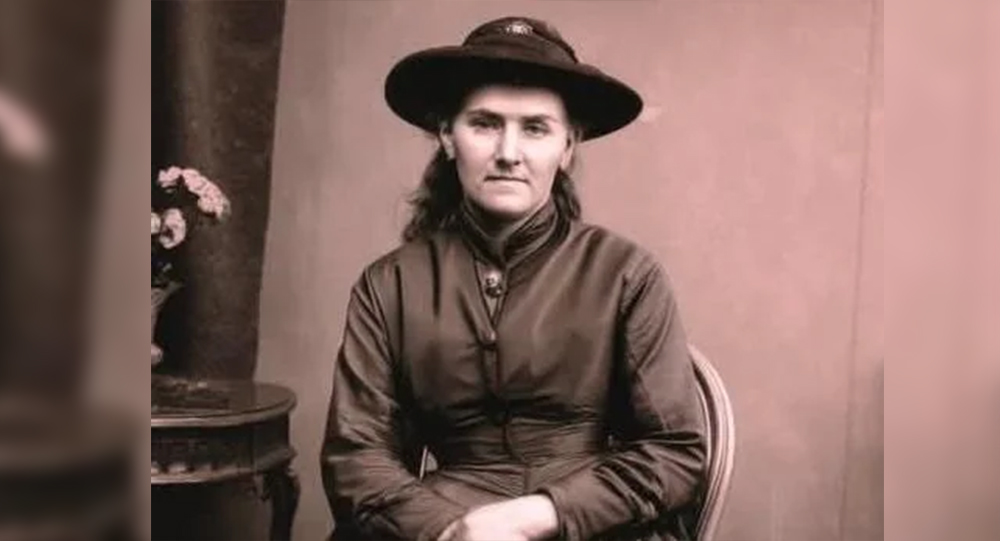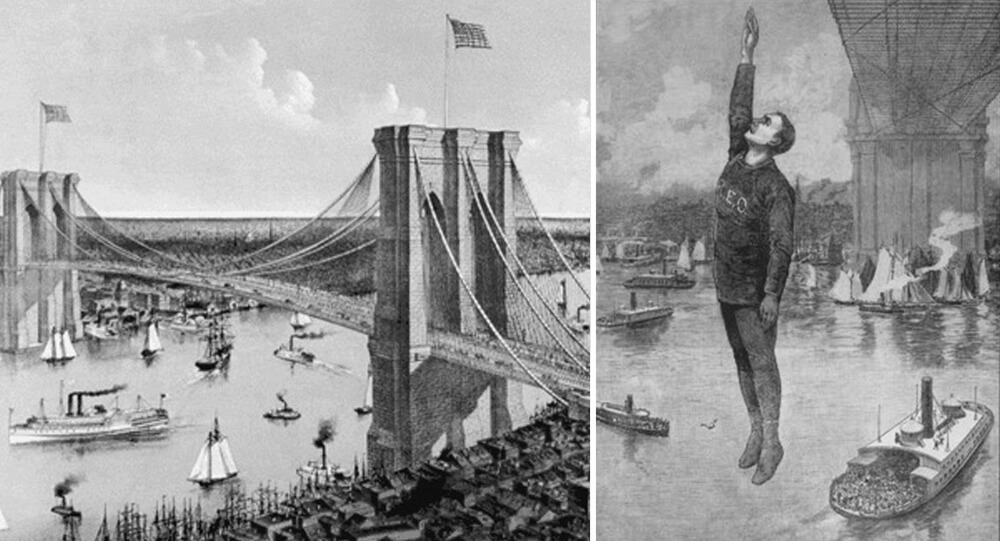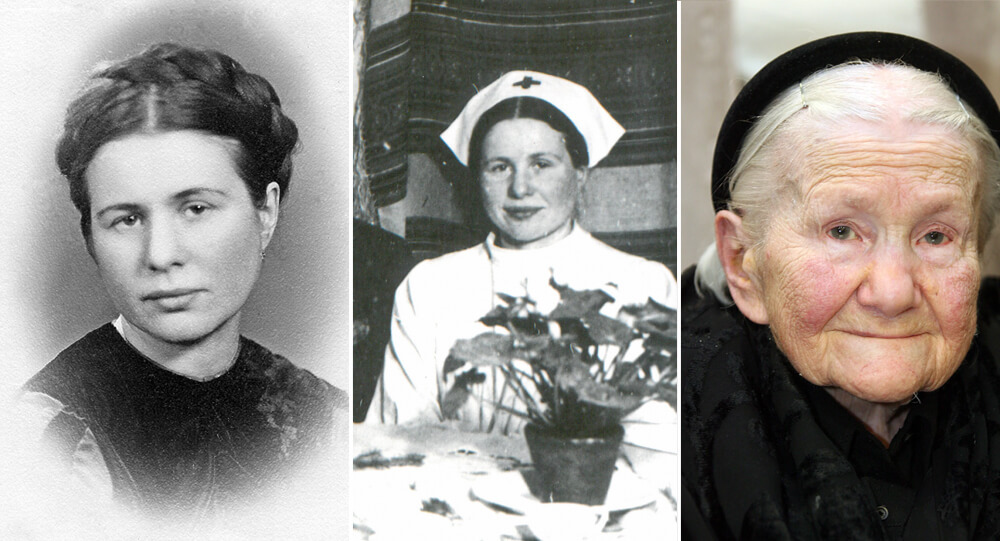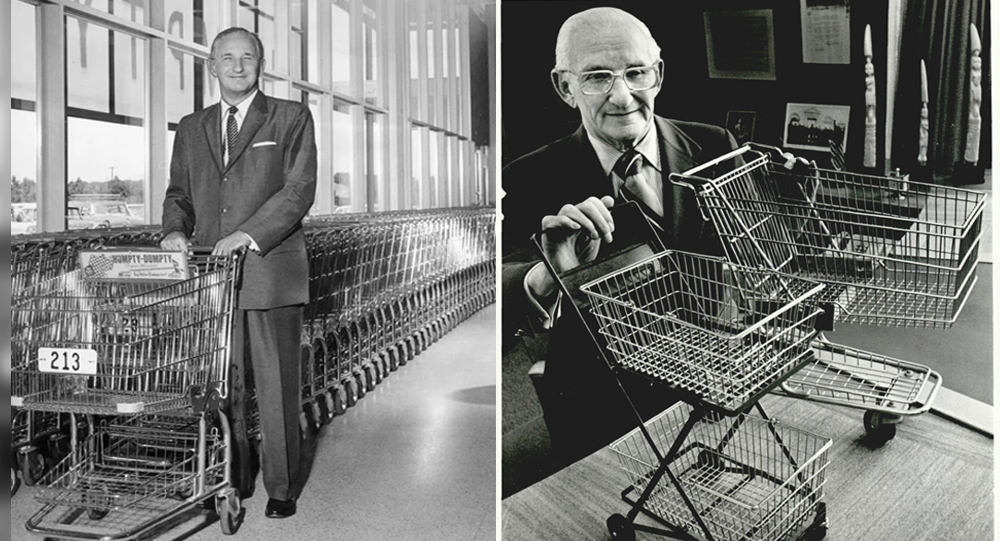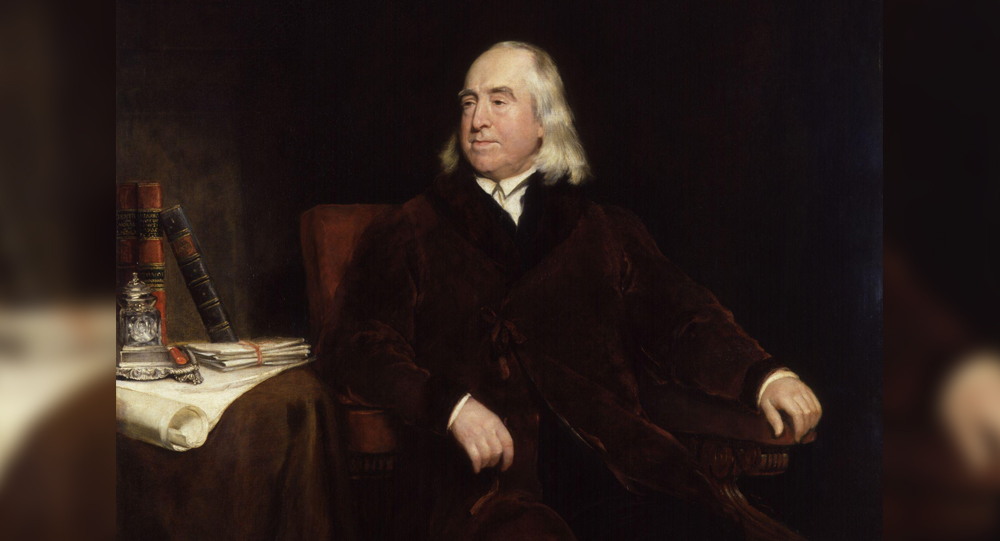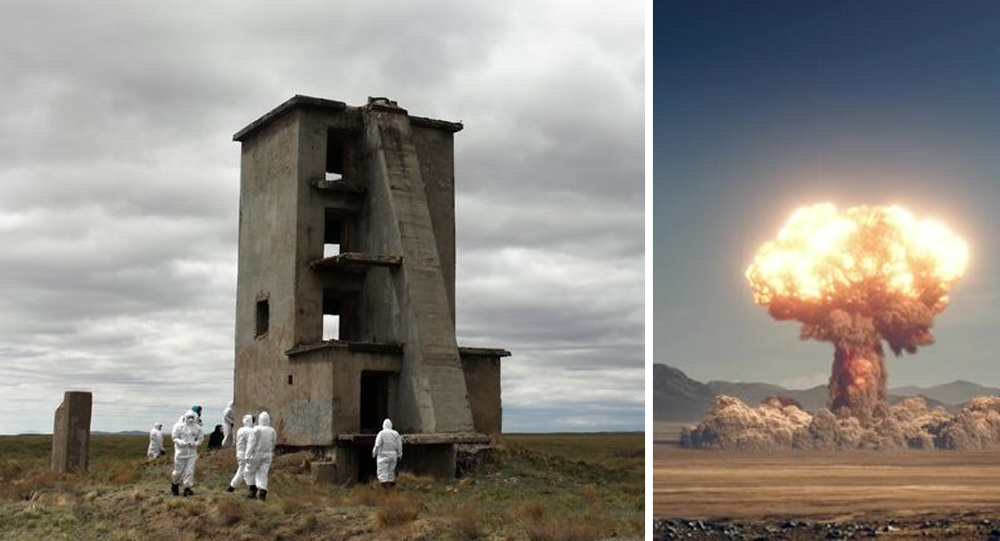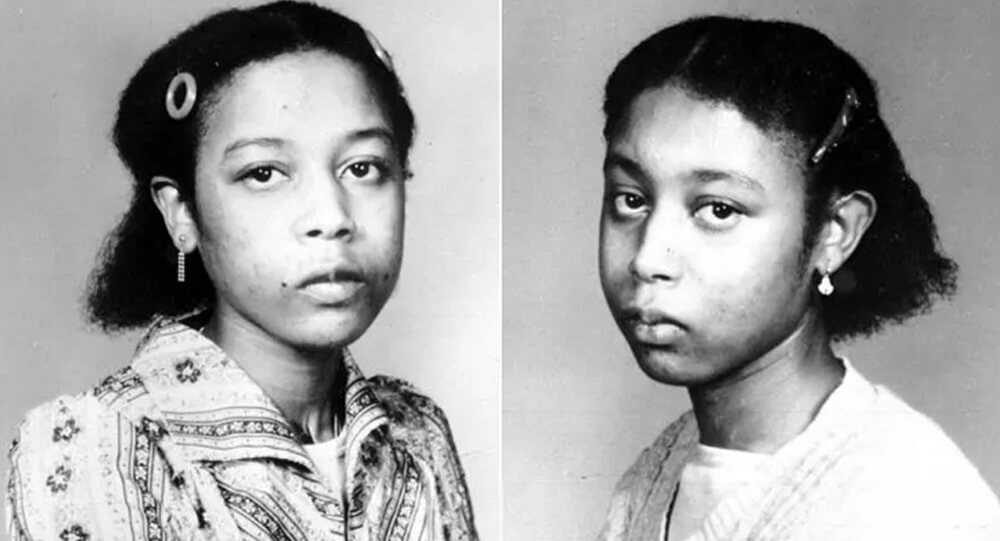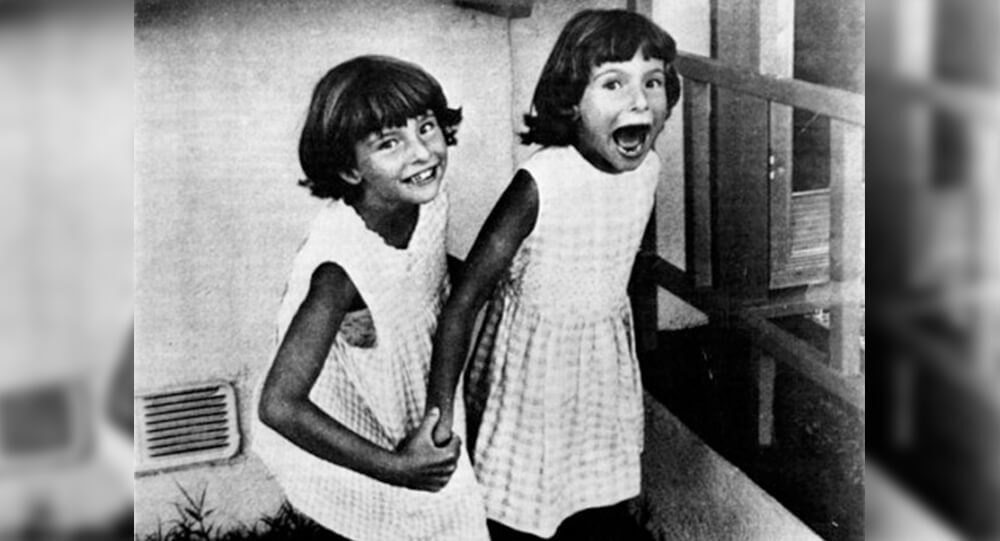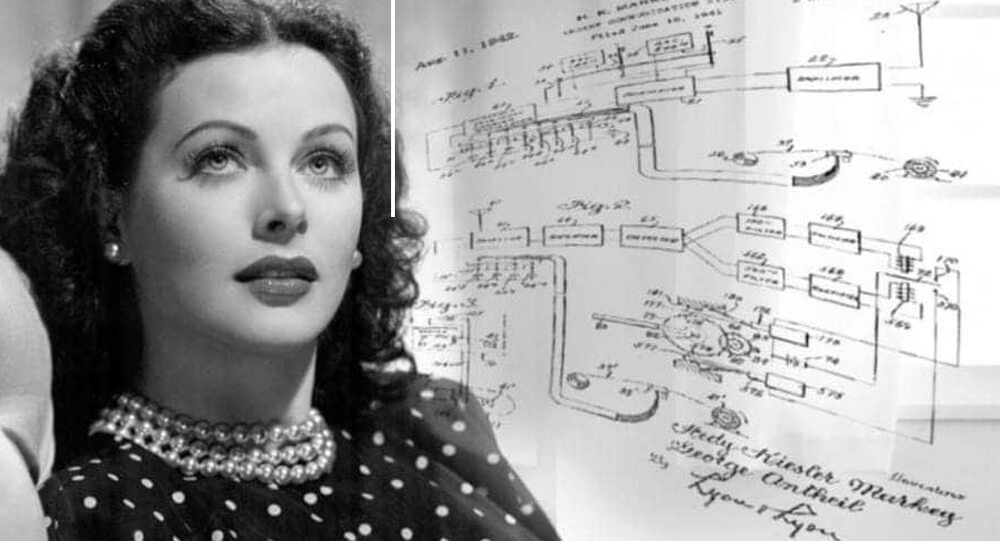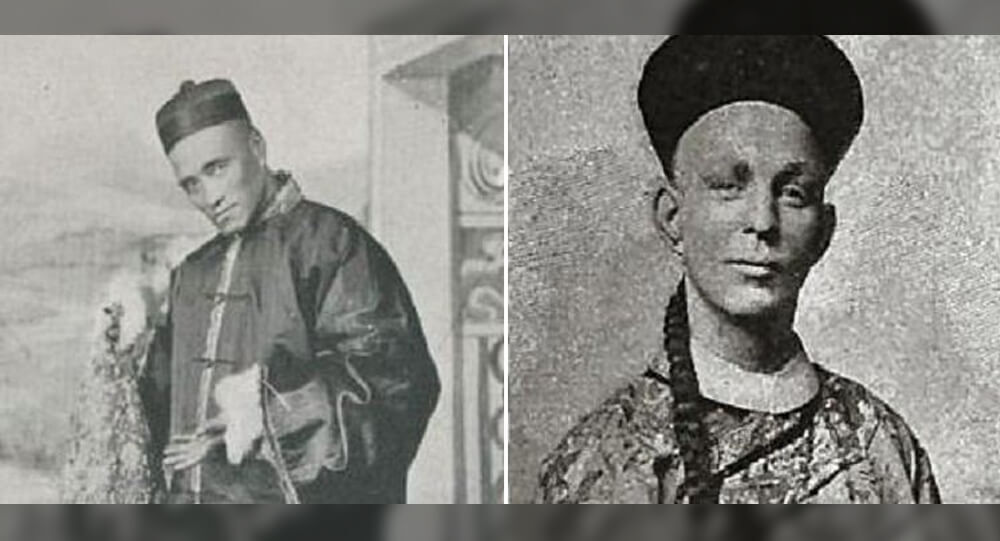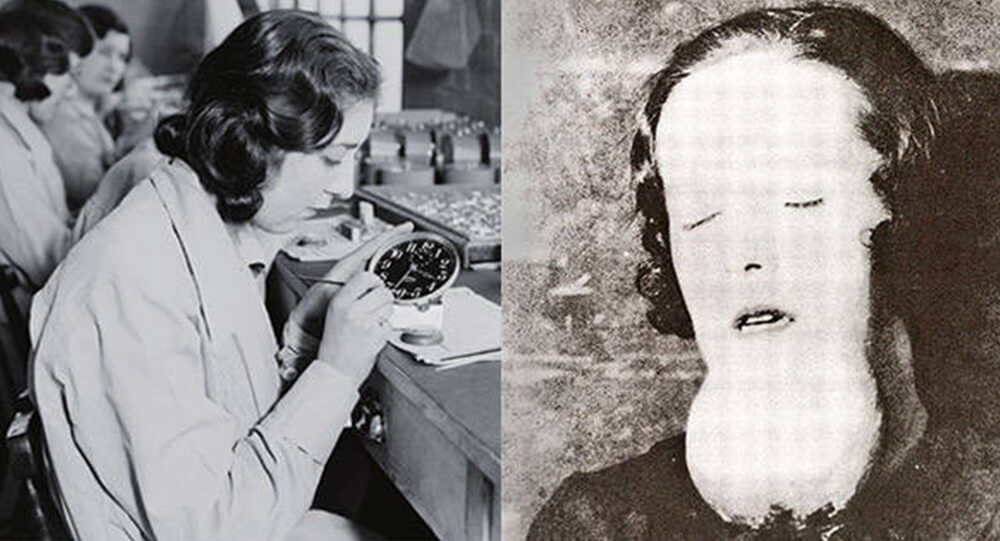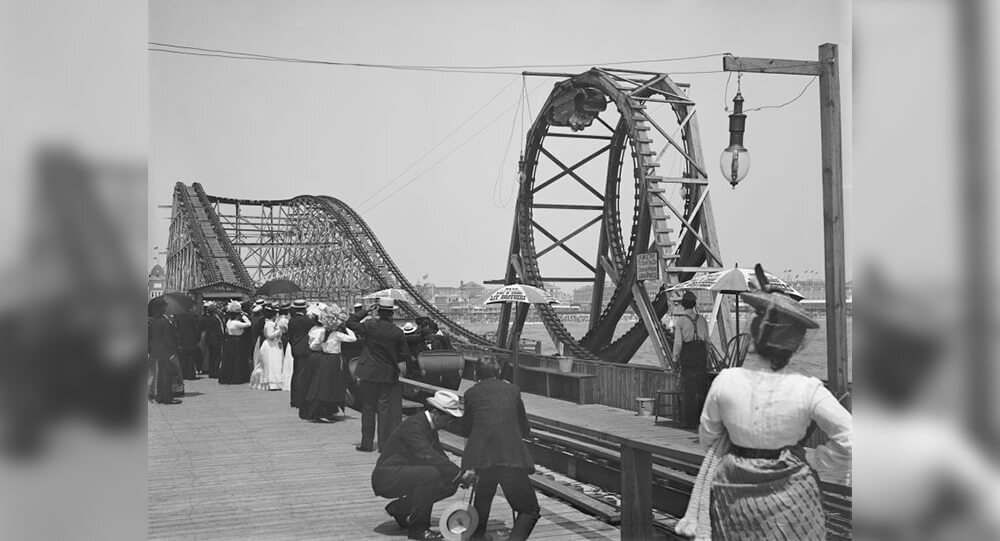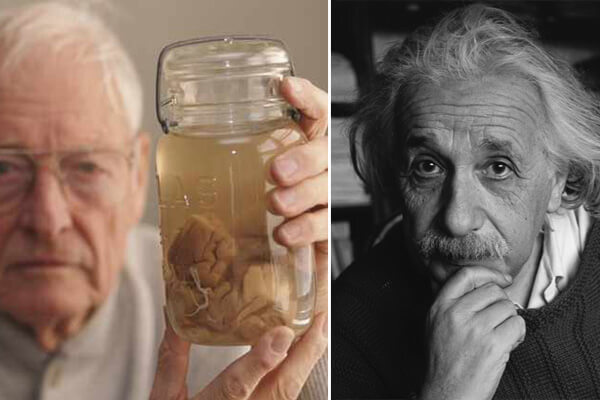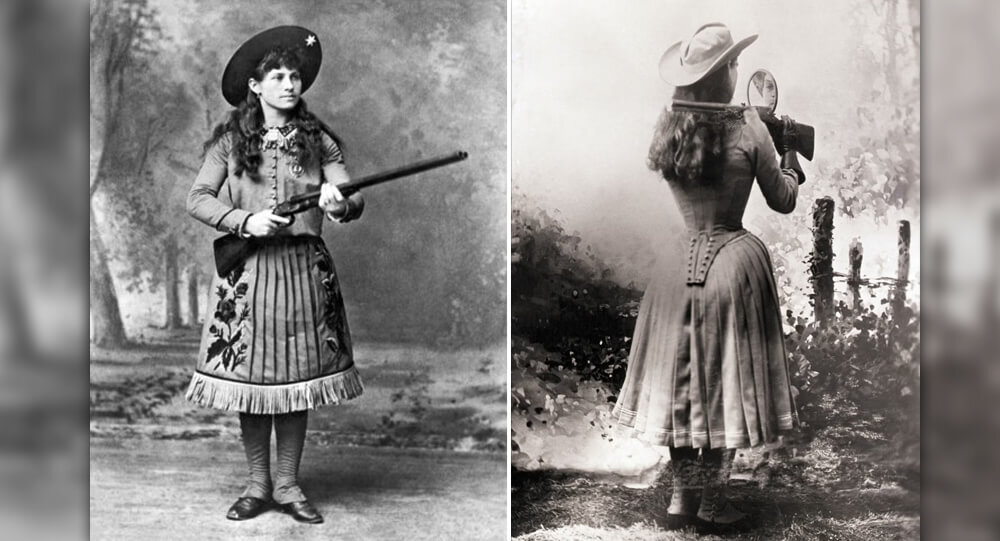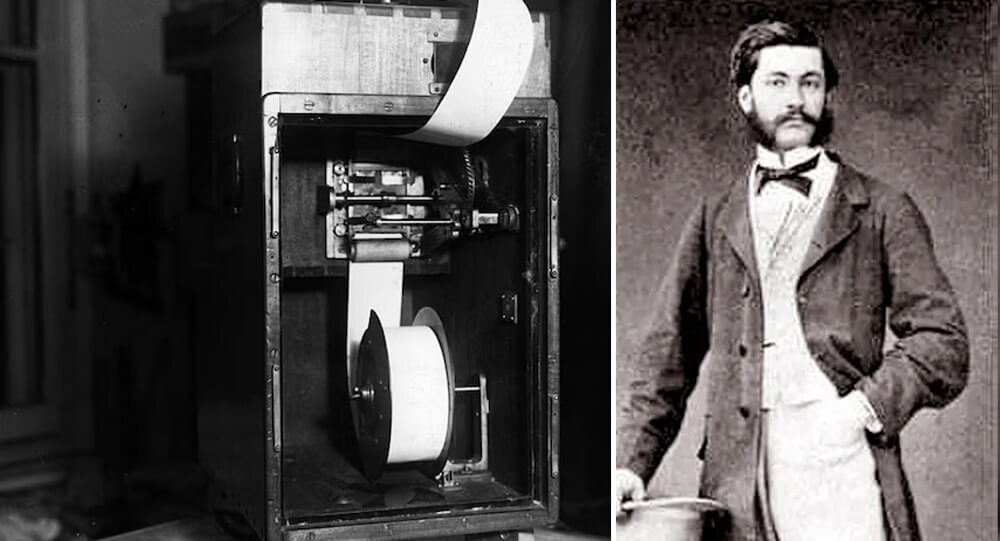

Louis Le Prince Invented the motion picture camera, and then he mysteriously disappeared
The Lumière brothers and Thomas Edison are both recognized in film history for their contributions to the art.
However, a lesser-known individual who has been dubbed the “forgotten father of cinema” deserves more attention.
The French inventor Louis Le Prince used a camera he created to create a short film in 1888.
According to an odd coincidence of fate, Paul Fischer, a writer and film producer, “His films could be dated very precisely to have been made seven years before that of the Lumière brothers.”
Le Prince, however, was never able to claim his rightful place in cinema history because he mysteriously disappeared before he could screen that movie in New York as he had intended in 1890.
Le Prince shot these films, had the paperwork approved, and then vanished, according to Fischer. “[Le Prince’s] machine still exists in a museum; he held the patents.
Curiously, Thomas Edison claimed to have created a motion picture camera in 1891 just a few months after Le Prince vanished.
“One of the great twists in the story is that Le Prince’s family, his widow and his children became convinced that Edison had just stolen Louis Le Prince’s ideas,” he says.
According to Fischer, Edison has historically been accused of stealing other people’s ideas through bureaucracy.
And to make matters worse, Le Prince’s widow Lizzie suspected that Edison might have had something to do with her husband’s disappearance.
The spark
In the eastern French city of Metz, Louis Le Prince was born in 1841.
![Louis Le Prince [right] with his father in-law at the Whitley family home in Roundhay, Leeds, West Yorkshire, 1887. Photo credit: Getty: Hulton Archive](https://weeklyrecess.com/uploads/article/Louis-Le-Prince-Invented-the-motion-picture-camera-and-then-he-mysteriously-disappeared-1.jpg)
He was raised in a middle-class military family and went to college to study chemistry, optics, and the arts.
“He was very much like one of those people at the end of the Victorian era who were trying to combine artistic pursuits with technological development,” Fischer claims.
He wed Elizabeth Whitley, an artist, in 1869, and the two eventually settled in England where he went to work at her relatives’ iron forge.
He claims that’s when he first learned about the patent system and the notion that you could invent something that would change your life.
Le Prince’s interest in developing a motion picture camera was motivated by two things, according to his wife.
In his shed, he started to experiment with photography. While holding two frames, one of them slipped, giving the impression for a split second of a moving figure.
After his father-in-law gave his grandchildren a magic lantern, an early type of projector, the second part of his concept was born.
After that, Le Prince became fixated on the creation. And he was prepared to risk the fame and wealth of his entire family in order to see it through.
“At times, when you read [his] correspondence, it feels like his sort of sanity is on the line; that this spark, this vision, had taken over his life,” Fischer says.
Le Prince’s perseverance finally paid off. He developed a 12-frame-per-second standing camera.
According to some writing by [Le Prince’s] son, they may have been aiming for 14, 15, or 16 [frames per second], but 12 was the best they could manage, according to Fischer.
Le Prince also used this camera to record the well-known Roundhay Garden Scene.
This short film, which Le Prince shot in October 1888, is the oldest motion picture still in existence.
Le Prince’s in-laws, a friend of the family, and his son are seen having fun in the Yorkshire home’s garden, according to Fischer.
And in many ways, it has the element that makes movies so magical: it is extremely vivid and realistic, but unmistakably ghostly.
George Eastman of Eastman Kodak launched the sale of flexible roll film around the same time. As a result, Le Prince was able to successfully capture and project his movie.
Prior to that, he had to project his movie onto paper or glass plates, both of which could catch fire or shatter.
Therefore, Fischer explains, “There are letters, correspondence, and diaries where [Le Prince] and his associates, as well as Joseph, his father-in-law, say “He’s done it, he’s figured it out.”
Le Prince asked his wife to rent a mansion in New York so he could use it as a location to publicly show his films for the first time. He was eager for the general public to see this new invention. And he announced to everyone his intention to relocate to New York.
The disappearance
Le Prince visited his brother in France once more before departing in order to settle a family inheritance.
After spending a weekend with his family in Dijon in September 1890, he took a train back to Paris where he intended to meet up with some friends before boarding a ship for New York.
Le Prince vanishes at some point between getting on the train in the south of France and the train arriving in Paris, according to Fischer.
It took weeks before anyone realized he had vanished due to the geography and lack of technology in the area.
Shortly after he vanished, a report claiming Thomas Edison to have invented the motion picture camera appeared in New York newspapers.
“As Elizabeth is reading it, [she realises] it sounds exactly like what Louis was working on — and was about to make a fortune from,” Fischer says.
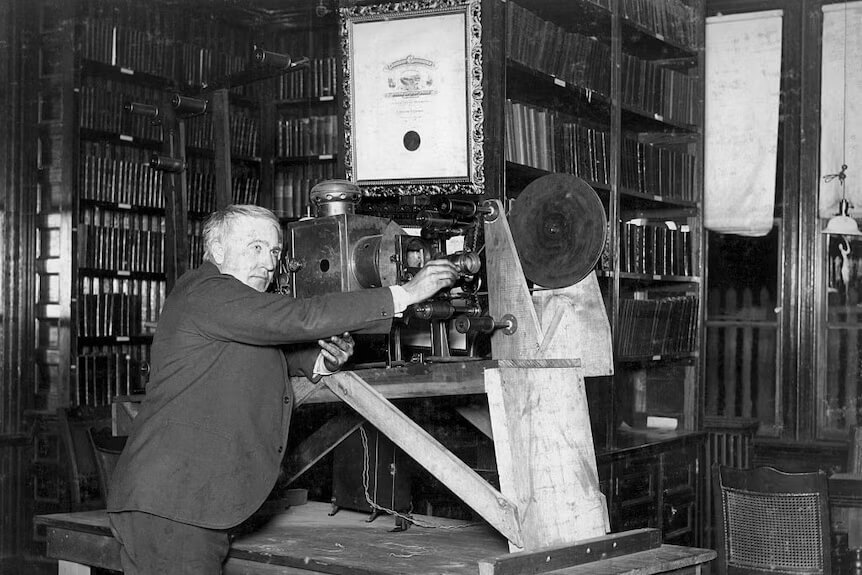
Fischer does not believe Edison was involved in the disappearance of Le Prince, despite Elizabeth’s suspicions.
He claims that Edison frequently destroyed his rivals by filing caveats as an alternative, preventing other inventors from realizing their ideas.
A caveat is a formal notice that prohibits other parties from temporarily pursuing an interest in something, be it real estate or land.
Being a wealthy man, Edison submitted countless caveats, laying claim to vast areas of technology that he had never even considered, much less developed, says Fischer.
Edison would have a year and the information from the patent someone else had filed to create his own copy, he explains. “So if somebody actually filed a patent, to invent something, then the patent office would send out a cable saying someone has activated your caveat number.”
Le Prince’s son, who participated in many of his father’s experiments, nevertheless sued Edison in order to disprove his claims to have invented the motion picture camera.
The lawsuit was unsuccessful, despite the family’s desire for Le Prince’s labor to be valued for what it was.
Without a trace
Other explanations for Le Prince’s disappearance and alleged murder have developed over time.
According to Fischer, there have been rumors that Le Prince’s family members, like his brother-in-law, may have killed him due to a fight or a desire for money.
There’s also the possibility that he was killed or kidnapped in Paris, which was rife with street crime at the time.
“It was common for people to pull bodies out of the River Seine,” he says.
Another theory holds that Le Prince either committed suicide or fled and began a new life in order to conceal the fact that he existed. This is because his work was going horribly and he was running out of money.
And finally, there’s a chance that a rival, other than Edison, may have been involved in carrying out the act of eliminating the rival that Le Prince’s family had accused Edison of carrying out.
Le Prince’s disappearance, however, continues to be one of the most intriguing unsolved Victorian mysteries.
Sadly, his family was unable to bring attention to his legacy until it was too late.
“One fascinating thing about his disappearance is that at the time, under the law, if somebody went missing, if a body wasn’t found, and he couldn’t be declared dead, then all of their property, including intellectual property, was frozen for seven years, or until a body was found,” says Fischer.
In Le Prince’s case, this meant that for seven years his family was unable to use his patents, present the machine, license it, or profit from it.
On September 16, 1897, Le Prince was formally pronounced dead.
The Lumière brothers created the Cinématographe during this time, and Thomas Edison released the Kinetograph, a motion picture camera. They all became very wealthy.
“In a strange, ironic twist of fate, by the time Lizzie is able to sign the deed and take over Le Prince’s property, the race has been run,” Fischer says.

The Tragic Story Of Mary Ann Bevan, The ‘Ugliest Woman In The World’
After the death of her husband, Mary Ann Bevan had no income to support herself and her children. She then decided to enter a contest where she won the title of “ugliest woman” and was later hired by a circus. She endured this ridicule from the world to provide for her family.

During the 1996 Olympic bombing, Richard Jewell falsely accused of committing the crime after saving dozens of people
Richard Jewell, an American security guard, discovered a bomb during the 1996 Olympic Games in Atlanta and assisted in the evacuation, but was later wrongfully accused and faced public scrutiny. He was cleared, but it had a lasting impact on him until his death in 2007 at the age of 44.

The worst blizzard in recorded history: the 1972 Iran blizzard
The deadliest snowstorm ever recorded occurred in Iran in 1972. It lasted for a week, burying areas in 26 feet of snow and killing over 4,000 people, including the entire populations of three villages.

What is the story behind Wrigley chewing gum?
Wrigley's was originally a soap company that gifted baking powder with their soap. The baking powder became more popular than the soap so they switched to selling baking powder with chewing gum as a gift. The gum became more popular than the baking powder so the company switched to selling gum.

1972 Andes Plane Crash Survivor recall the terrifying Struggles to Stay Alive
On October 13, 1972, a plane carrying a rugby team from Uruguay crashed in the Andes between Chile and Argentina. The survivors were in brutal conditions - high altitude, bitter cold, and the lack of food—and faced the most terrible choice—eating the frozen flesh of their dead friends or starving to death themselves.

Why Comedians Failed to Make Sober Sue Laugh in the Early 1900s
In the bustling vaudeville scene of early 20th century New York, a mysterious performer known as "Sober Sue" captured public imagination not for jokes or songs, but for her unshakable stoicism—she never smiled or laughed. A local theater even offered a tempting reward of $1,000 to anyone who could make her laugh, drawing crowds and famous comedians eager to claim the prize. Despite countless hilarious attempts, Sue remained expressionless, a mystery that baffled performers and audiences until it was revealed that she suffered from facial paralysis, explaining her unchanging demeanor.

Robert Odlum, the first person to jump off the Brooklyn Bridge
The first person to jump off the Brooklyn Bridge was a professional high diver who "wanted to demonstrate that people did not die simply by falling through the air, thus encouraging people to be willing to jump from a burning building into a net." He proved himself correct by safely falling 135 feet through the air and dying only when he hit the water.

The World’s First Seismograph: How Ancient China Detected Earthquakes 1,800 Years Ago
Over 1,800 years ago, long before modern technology, the ancient Chinese astronomer and inventor Zhang Heng created the world’s first seismograph in 132 AD. This ingenious bronze device could detect distant earthquakes by releasing small balls from dragons’ mouths into toads’ mouths—each indicating a different compass direction. Its historic detection of an earthquake 400 miles away astonished the imperial court and transformed the way societies understood and responded to seismic events.

How European Rabbits Took over Australia
In 1859, wealthy settler Thomas Austin released 13 wild rabbits on his Australian estate. By 1920, their population grew to 10 billion.

Terry Fox, a 21-year-old one-legged cancer patient who ran 143 days before dying
Terry Fox was a 21-year-old one-legged cancer patient who ran 3,339 miles across Canada in 143 days before dying.

Irena Sendler: woman who rescued Jews during holocaust
Irene Sendler was the Zegota resistance group's head of the children's department. She risked her life to smuggle children out of the Warsaw ghetto, place them with Polish families or orphanages, give each child a new identity, and keep records so that they could be returned to their families. In 1943, the Gestapo arrested and sentenced her to death, but she was rescued by Zegota.

Archaeologists Uncover 2,000-Year-Old Amazonian Cities Using Lidar Technology
Deep in the Ecuadorian Amazon, archaeologists have uncovered an ancient network of urban settlements once inhabited by the Upano people about 2,000 years ago. Using cutting-edge lidar technology, these discoveries reveal a highly organized society featuring sophisticated agricultural systems, drainage canals, and extensive road networks. This transformative find challenges long-held assumptions about ancient Amazonian societies and sheds light on a complex civilization thriving in one of the world’s most biodiverse regions.

Nordlingen, The Town Inside A Meteorite Crater With Millions Of Meteorite Diamonds
The German town of Nördlingen is embedded with 72,000 tons of microscopic diamonds. About 15 million years ago, a meteorite hit this region, and the impact created a massive depression and formed rocks containing diamonds, glass, and crystals. The town was built in the impact crater sometime around 898 CE.

Sylvan Goldman: The Visionary Who Revolutionized Shopping with the Cart
The inventor of shopping carts, Sylvan Goldman, had to hire several male and female models to push carts around in his store, demonstrate their utility, and explain their use to other customers, due to not catching on initially.

How 18th Century Women’s Rights Movements Shaped Modern Equality
The 18th century marked a turning point in the quest for women’s rights, as passionate voices challenged centuries of gender inequality and laid the groundwork for modern feminism. From pioneers like Mary Wollstonecraft to revolutionary declarations and early advocacy, this era sparked debates on education, political participation, and social justice that continue to resonate today. Journey through the origins of women’s rights movements and discover how their bold ideas shaped the fight for equality.

The Forgotten Story of Semipalatinsk and the Soviet Nuclear Experiments
Between 1949 and 1989, the Semipalatinsk Test Site in Kazakhstan became the primary location for Soviet nuclear weapons tests, exposing millions of unsuspecting villagers to radioactive fallout. Known as the “Polygon of Suffering,” this remote desert witnessed 456 nuclear detonations that caused widespread health crises, birth defects, and generational genetic damage. This article narrates the chilling legacy of Semipalatinsk, unveiling the human cost of Cold War arms development and the ongoing struggle for healing and recognition in Kazakhstan.

June and Jennifer Gibbons The silent twin who Only Spoke to Each Other
Identical twins June and Jennifer Gibbons were born on 11 April 1963 at a military hospital in Aden, Yemen where their father worked as part of the Royal Air Force.

Poto And Cabengo: The Secret Language Of Twins
Poto and Cabengo, as the two girls called each other, communicated in their own language. The twins were ignored by their parents and secluded from the outside world because their father felt they were developmentally retarded, and their unique language evolved as a result of that neglect.

3 men lived on top of a billboard in tents for almost 9 months
From 1982-1983, three men in Allentown PA competed in a radio contest in which they lived on top of a billboard in tents. Whoever stayed up longest would win a house. Due to economic pressure from the recession, none of the contestants wanted to give up, so the contest lasted almost 9 months.

Hedy Lamarr, A Hollywood actress who also a mathematician and inventor
Hollywood actress Hedy Lamarr was also a mathematician and the inventor of frequency hopping spread spectrum, a technology still used for bluetooth and wifi

The Bizarre (And Magical) Duel Between Chung Ling Soo And Ching Ling Foo
Ching Ling Foo and Chung Ling Soo were two magicians from the early 20th century who were bitter rivals. While Ching Ling Foo was genuinely Chinese, Chung Ling Soo was actually a New Yorker named William Robinson.

The true story Of The Radium Girls that change US labor laws
Hundreds of young women worked in clock factories during World War I, painting watch dials with luminous radium paint. The company lied about the risk of radiation, claiming there was no danger, which resulted in the death of the young women.

Roller Coasters were First Invented to Distract People from sin
Roller coasters were invented to distract Americans from sin. In the 1880s, hosiery businessman LaMarcus Thompson didn’t like that Americans were going to places like saloons and brothels and created the first roller coaster on Coney Island to persuade them to go there instead.

Albert Einstein’s brain after it was stolen from his body
Albert Einstein's brain was taken by the opportunistic pathologist who performed his autopsy hours after he died and kept in two jars for 30 years. The stolen brain of Albert Einstein was preserved in a cookie jar for 30 years until being discovered by a journalist.

The true story of Annie Oakley, legendary sharpshooter
Anne Oakley was such a good shooter that she could split a playing card help edge-on, hit dimes thrown into the air, shoot cigarette from her husband's lips, and pierce a playing card thrown into the air before it hit the ground.




